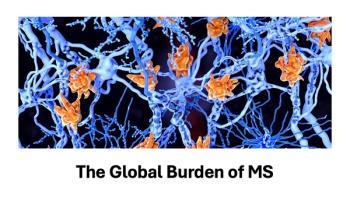
1 in 10 Have an Autoimmune Disease, Study Finds
Rates of Graves’ disease, celiac disease, and Sjögren’s syndrome doubled in the United Kingdom between 2000 and 2019.
A new report about the United Kingdom suggests that more than one in 10 people have been diagnosed with an autoimmune disease.
The report, which was presented at the European League Against Rheumatism (EULAR) 2023 Congress, in Switzerland, offers a wider view of trends that have been seen in individual autoimmune and anti-inflammatory diseases.
“However, estimates of autoimmune disease incidence rates and their temporal trends, even in high-income countries, are scarce and inconsistent,” they wrote.
For instance, type 1 diabetes has been widely reported to be on the rise, but even that conclusion is largely based on relatively small data sets, the authors said.
The investigators therefore decided to use a database of electronic health records from 22 million patients in the United Kingdom in order to see how many people had one of the 19 most prevalent autoimmune disorders. The results were
The authors collected two decades’ worth of data, from 2000 to 2019. Altogether, 10.2% of the population had been diagnosed with at least one autoimmune disease, they said. The rate was higher for women (13.1%) than for men (7.4%). Those figures include 978,872 people who had a new diagnosis of at least one autoimmune disease during the study period. Nearly two-thirds of those with a new diagnosis were female (63.9%).
“Autoimmune diseases affect approximately one in ten individuals, and their burden continues to increase over time at varying rates across individual diseases,” Conrad and colleagues wrote.
The investigators found the largest increase over time in rates of Graves’ disease, celiac disease, and Sjögren’s syndrome, all of which doubled over the study period.
The investigators found a number of instances in which people with one disorder were more likely to have other conditions.
“Autoimmune disorders are commonly associated with each other, particularly Sjogren’s, systemic lupus erythematosus (SLE), and systemic sclerosis,” Conrad said, in a press release. “Patients with type 1 diabetes also have significantly higher rates of Addison’s, celiac, and thyroid diseases, and multiple sclerosis stands out as having low rates of co-occurrence with other autoimmune diseases.”
The authors also found other associations, which they said may help explain why certain diseases increased in prevalence more than others. People in socioeconomically deprived areas were more likely to be diagnosed with pernicious anemia, rheumatoid arthritis, Graves’ disease, and SLE, for instance. They found many diseases varied in prevalence by region, and some diseases were more likely to be diagnosed in certain seasons. One example is childhood-onset type 1 diabetes, which was most commonly diagnosed in the winter.
“The socioeconomic, seasonal, and regional disparities observed among several autoimmune disorders in our study suggest environmental factors in disease pathogenesis,” Conrad and colleagues wrote. “The inter-relations between autoimmune diseases are commensurate with shared pathogenetic mechanisms or predisposing factors, particularly among connective tissue diseases and among endocrine diseases.”
The authors added that increased public awareness of autoimmune diseases may also play a role, as more people and providers recognize the symptoms of autoimmune diseases for what they are.
Newsletter
Get the latest industry news, event updates, and more from Managed healthcare Executive.




